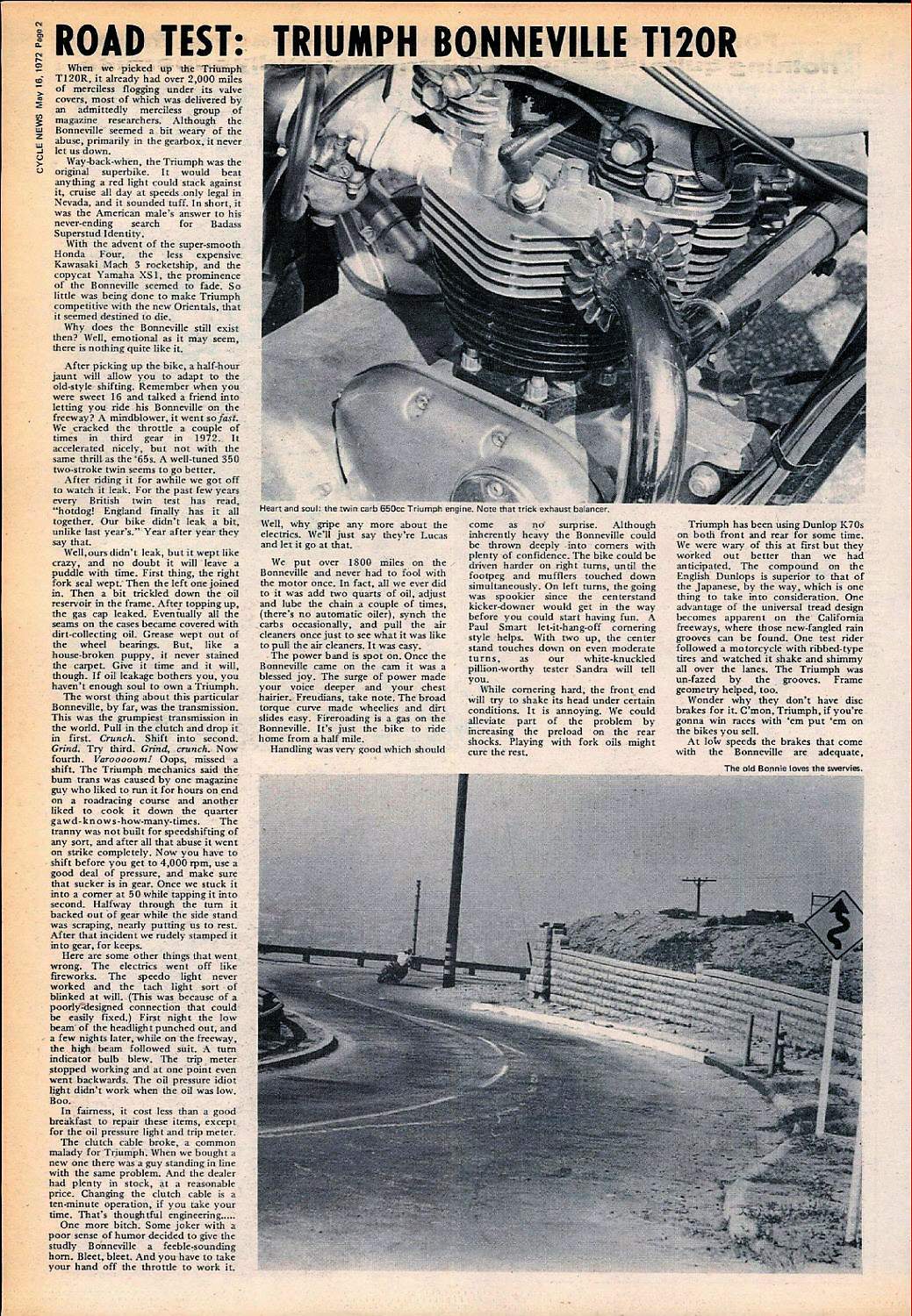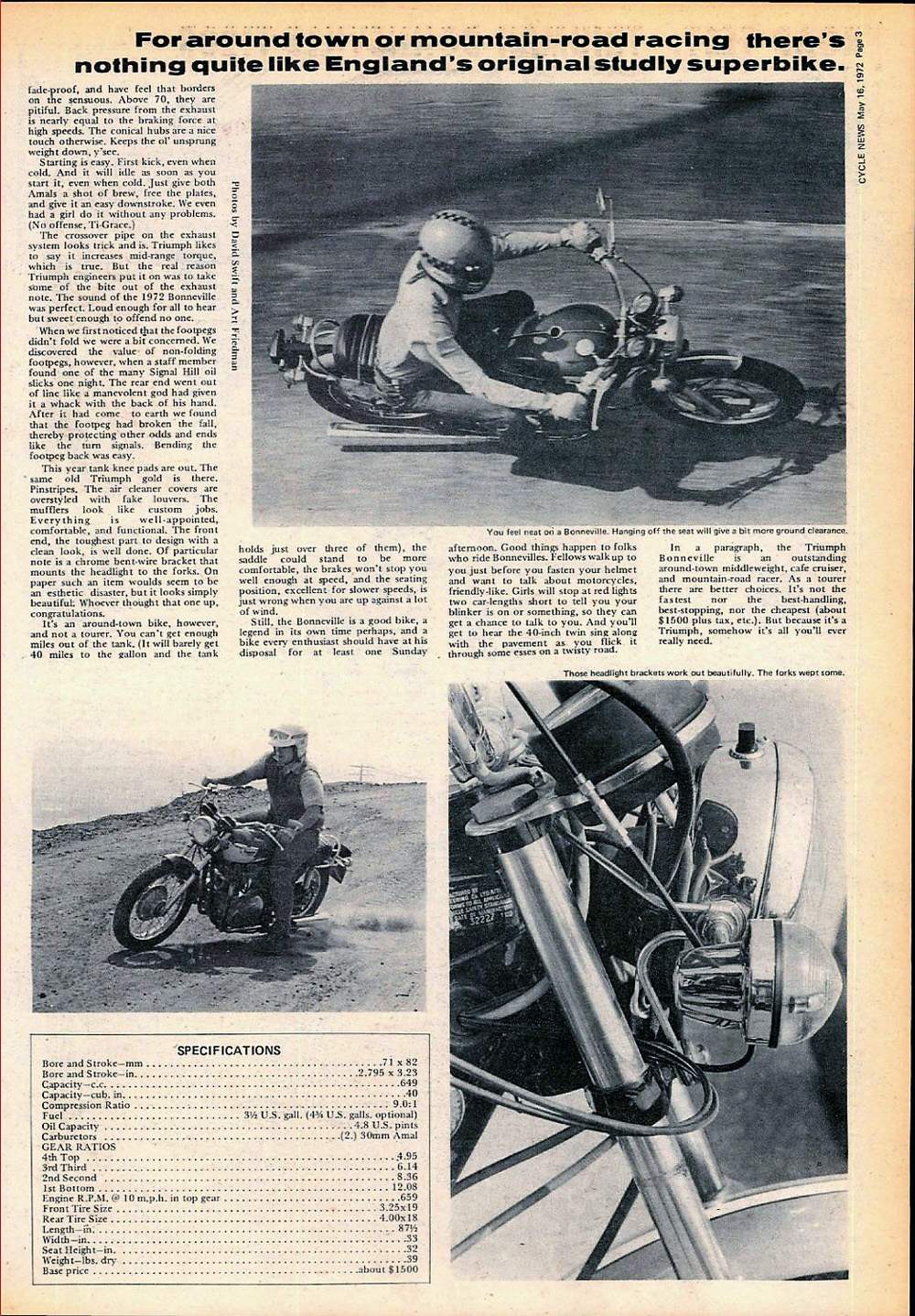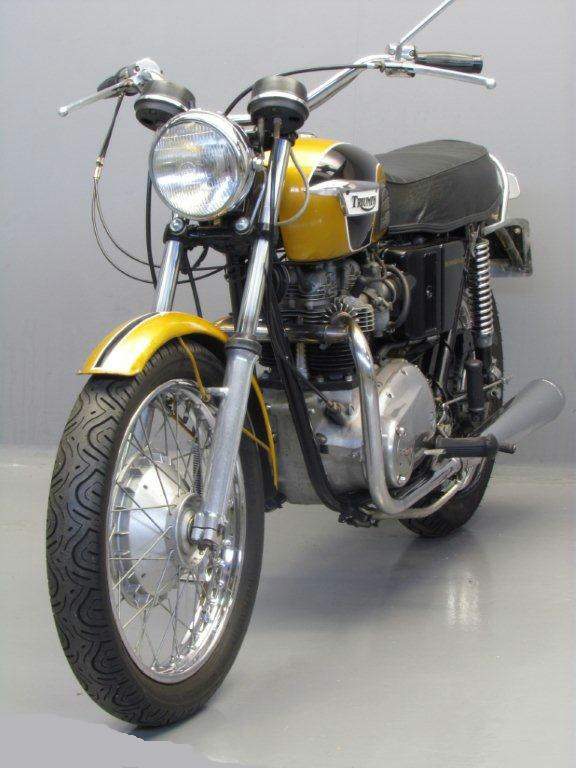
|
|
|
|
|
|
Classic Bikes
Custom Bikes
Individual
Racing Bikes AJP
AJS
Aprilia
Ariel
Avinton / Wakan
Bajaj
Benelli
Beta
Bimota
BMW
Brough Superior
BRP Cam-Am
BSA
Buell / EBR
Bultaco
Cagiva
Campagna
CCM
CF Moto
Combat Motors
Derbi
Deus
Ducati
Excelsior
GASGAS
Ghezzi Brian
Gilera
GIMA
Harley Davidson
Hero
Highland
Honda
Horex
Husaberg
Husqvarna
Hyosung
Indian
Jawa
Kawasaki
KTM
KYMCO
Laverda
Lazareth
Magni
Maico
Mash
Matchless
Mondial
Moto Guzzi
Moto Morini
MV Agusta
MZ / MuZ
NCR
Norton
NSU
Paton
Peugeot
Piaggio
Revival Cycles
Roland Sands
Royal Enfield
Sachs
Sherco
Sunbeam
Suzuki
SWM
SYM
Triumph
TVS
Ural
Velocette
Vespa
Victory
Vincent
VOR
Voxan
Vyrus
Walt Siegl
Walz
Wrenchmonkees
Wunderlich
XTR / Radical
Yamaha
Zero
Video
Technical
Complete Manufacturer List
|
Triumph Bonneville 650 T120
|
|
Make Model |
Triumph Bonneville 650 T120 |
|
Year |
1972 |
|
Engine |
Four stroke, parallel twin, OHV |
|
Capacity |
649 cc / 39.6 cu in |
| Bore x Stroke | 71 x 82 mm |
| Compression Ratio | 9.0:1 |
| Cooling System | Air cooled |
|
Induction |
2 x 30 mm Amal concentric carburetors |
|
Ignition |
Battery, coil |
|
Starting |
Kick |
| Lighting system | 12V alternator |
| Oil system. | Double plunger pump, dry sump |
| Oil capacity | 3.4 L / 7.2 US pt / 6 Imp pt |
| Clutch | Multi-disc, wet |
|
Max Power |
37.3 kW / 50 hp @ 7000 rpm |
| Max Toque | 52.1 Nm / 5.3 kgf-m / 38.5 lb-ft @ 6000 rpm |
|
Transmission |
4 Speed |
|
Final Drive |
Chain |
| Gear Ratios | 4th 4.95 / 3rd 6.14 / 2nd 8.36 / 1st 12.08 |
|
Front Suspension |
Telescopic forks |
|
Rear Suspension |
Swinging arm, dual shocks |
|
Front Brakes |
Drum |
|
Rear Brakes |
Drum |
|
Front Tyre |
3.25 -19 |
|
Rear Tyre |
4.00 -18 |
| Fuel Capacity | 16L / 4.2 US gal / 3.5 Imp gal |
|
Wet Weight |
181 kg / 399 lbs |
The 1971 Triumph Bonneville was the problem child of
a shotgun marriage. It was responsible for Triumph missing that year’s U.S.
sales season, and it just about bankrupted the company.
The late Sixties Triumph Bonnevilles were, and still are, considered to be the
best of the lot. But a major program of standardization was underway across the
BSA Group, which also owned Triumph. For the 1971 season, BSA planned to use a
new oil-bearing frame for both BSA and Triumph 650 twins.
However, the new Triumph frame had been designed around the BSA 650 engine, and
when the first batches of frames were delivered to Triumph’s Meriden factory,
assembly line workers found they couldn’t fit the Triumph engine in the frame
without removing the rocker boxes from the cylinder head first.
The 1971 Bonnies were already behind schedule because of production delays
caused by a shortage of parts — the result of teething troubles with a new
computer system. The cumulative result was that very few Bonnevilles were at
U.S. dealers for the critical April to June sales season. Other problems with
the 1971 bike included a seat height only suitable for people over 6 feet tall,
major frame failures caused by the center stand being mounted on the oil-bearing
“sump,” and aesthetics only a short-sighted mother could love. The 1971 model is
perhaps the least popular of all Bonnies.



|
Any corrections or more information on these motorcycles will be kindly appreciated. |